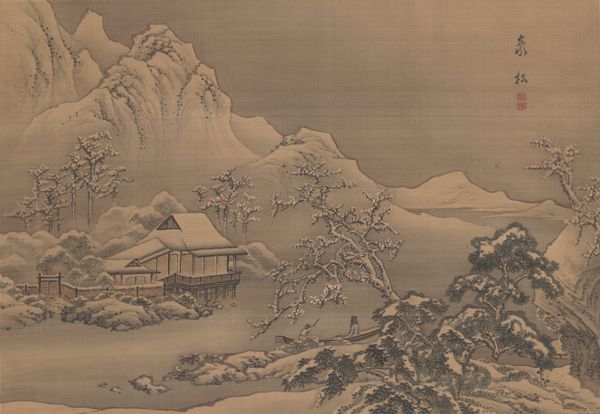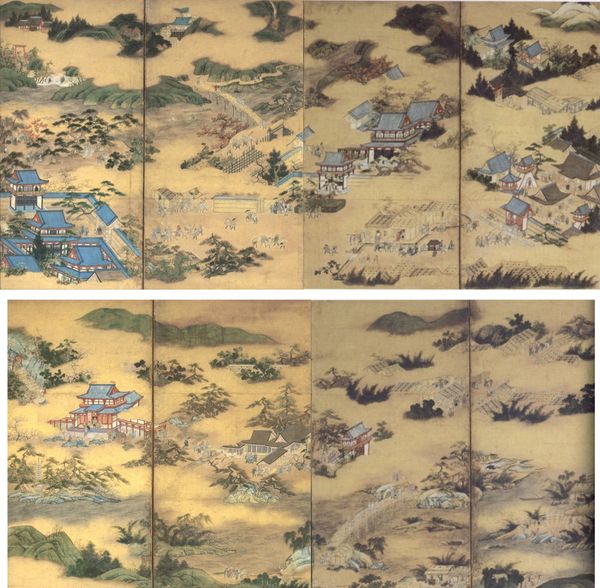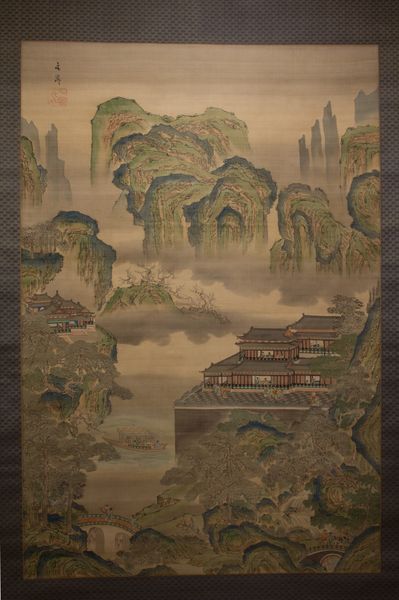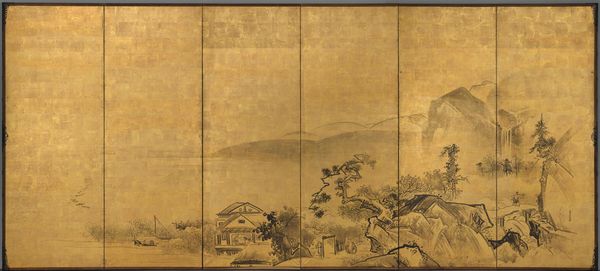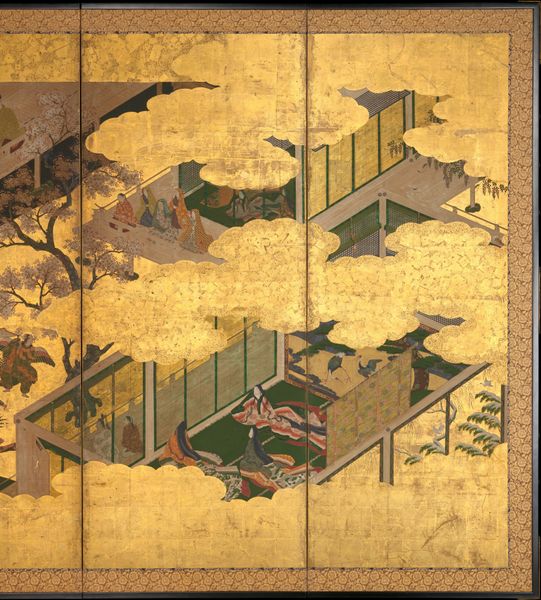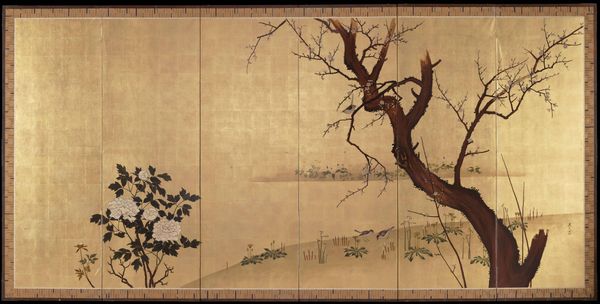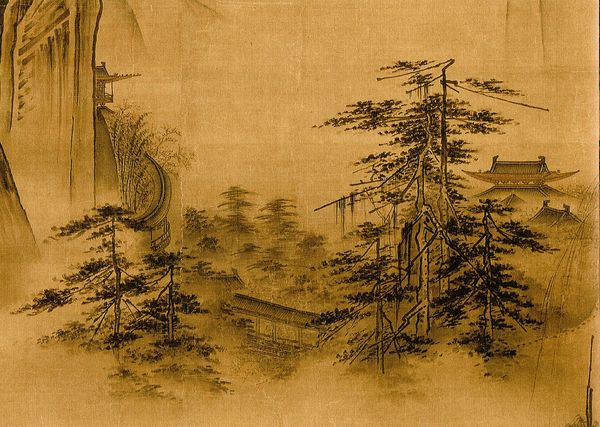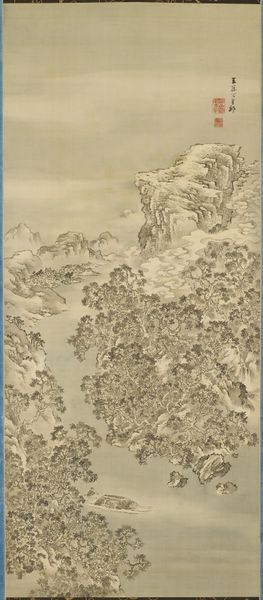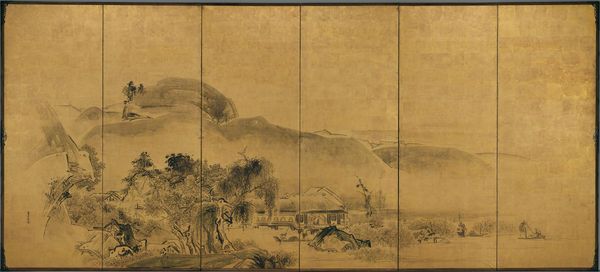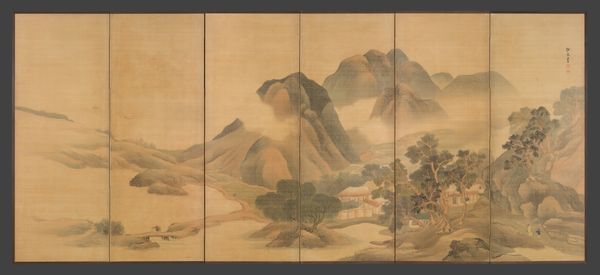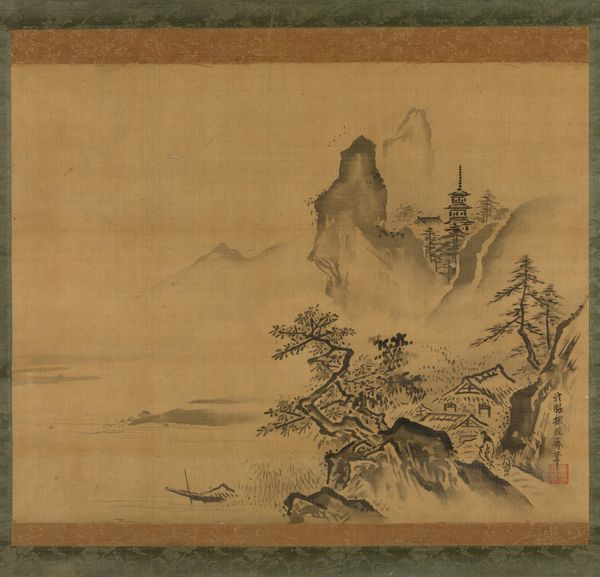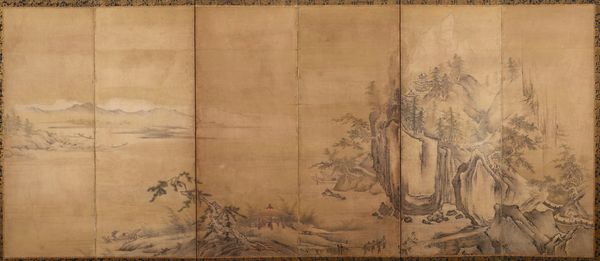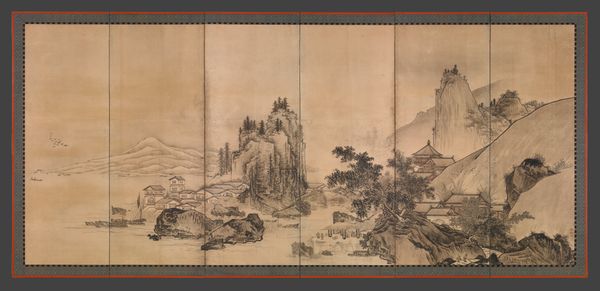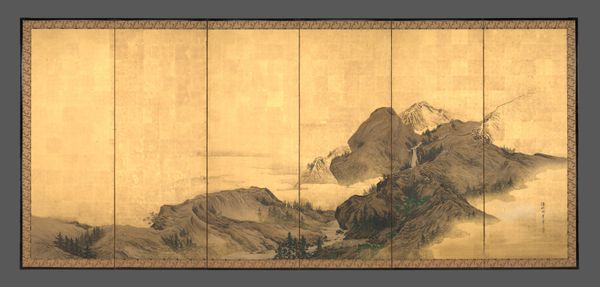
painting, watercolor
#
water colours
#
painting
#
asian-art
#
landscape
#
japan
#
oil painting
#
watercolor
#
genre-painting
Dimensions: 65 1/16 × 140 in. (165.26 × 355.6 cm) (image)72 1/8 × 147 1/4 × 3/4 in. (183.2 × 374.02 × 1.91 cm) (mount)
Copyright: Public Domain
Editor: Yokoyama Kazan’s "The Lanting Gathering," painted around the 19th century and rendered in watercolor, offers such an ethereal feel, almost dreamlike in its muted tones. It looks like a gathering in a mountainous landscape, a sort of scholarly retreat. What symbols or hidden meanings do you see within this scene? Curator: The composition itself whispers of idealized gatherings and shared artistic pursuits. Look closely. Notice the intentional placement of figures in nature. How do you think their poses or activities reflect something about their values and social status? Editor: Well, they seem contemplative, some are writing, others conversing. It seems to point to the value of intellectual and artistic exchange within their culture. I wonder, what’s the cultural significance of this gathering being situated in such a natural setting? Curator: The landscape itself is laden with symbolism. The mountains, often depicted in East Asian art, evoke a sense of permanence, wisdom, and a connection to something greater than oneself. The water represents purity and the fluidity of thought, allowing for contemplation and inspiration. Does the integration of nature and people reveal specific aspects of their way of life? Editor: I see it as revealing the importance of harmony between humanity and nature, emphasizing the idea of finding wisdom through observing and being present in the natural world. Curator: Exactly! And think of this as more than just a representation of an event; it’s a cultural memory. What do you think viewers at the time felt, or were meant to feel, when seeing this depiction of an esteemed historical event, filtered through their own contemporary lens? Editor: It really seems designed to stir feelings of nostalgia, or longing for a simpler, more refined time of artistic and intellectual community. Curator: Precisely. By invoking those emotions, Kazan uses visual imagery to create cultural continuity, ensuring that those values and traditions endure through art. It’s really remarkable. Editor: I see the way in which artistic depictions and choices shape our collective cultural consciousness, carrying shared ideals and values across generations. Thank you for offering a richer understanding of cultural memory within this piece.
Comments
minneapolisinstituteofart almost 2 years ago
⋮
In late spring of 353, the celebrated Chinese calligrapher Wang Xizhi (303–361) invited forty-one scholars to a purification ceremony at the Orchid Pavilion (Chin. Lant-ing) near Shaoxing in Zhejiang Province. During the drinking party that followed the ceremony, wine cups were floated down a winding creek, and the participants had to compose a poem before a cup floated by. The result was thirty-seven poems by twenty-six scholars that are listed in the Lantingji xu, the “Preface to the Orchid Pavilion Collection.” Yokoyama Kazan (1784–1837) favored subjects such as tigers and historical events and was apparently known for his great love of sake. This eminently scholarly theme seems to match his own biography, and he uses a fineline detail for the architectural and figural elements. Almost in the center of the folding screen is a thatched hut built on stilts over the water, the Orchid Pavilion, where Wang Xizhi is seated at a red-lacquered desk. The clothing and props are highlighted in strong colors and sharply set apart from the axe-stroked rocks. The decorative gold basis clearly distinguishes this work from the aesthetic view of a nanga artist.
Join the conversation
Join millions of artists and users on Artera today and experience the ultimate creative platform.
